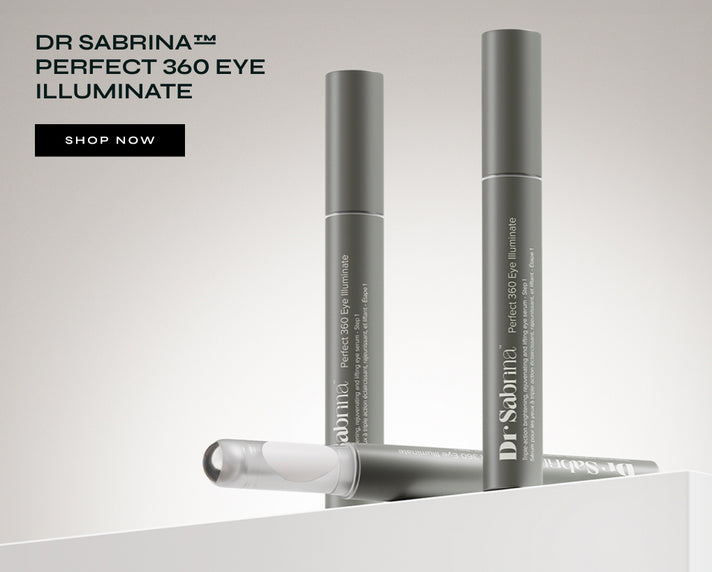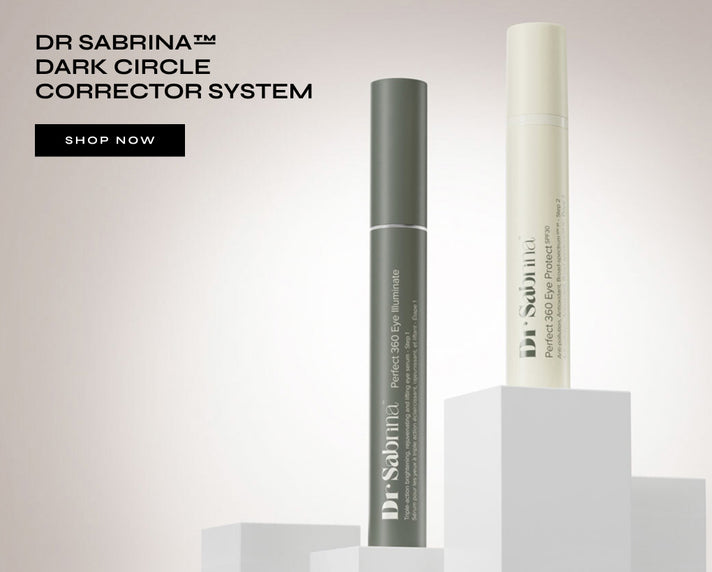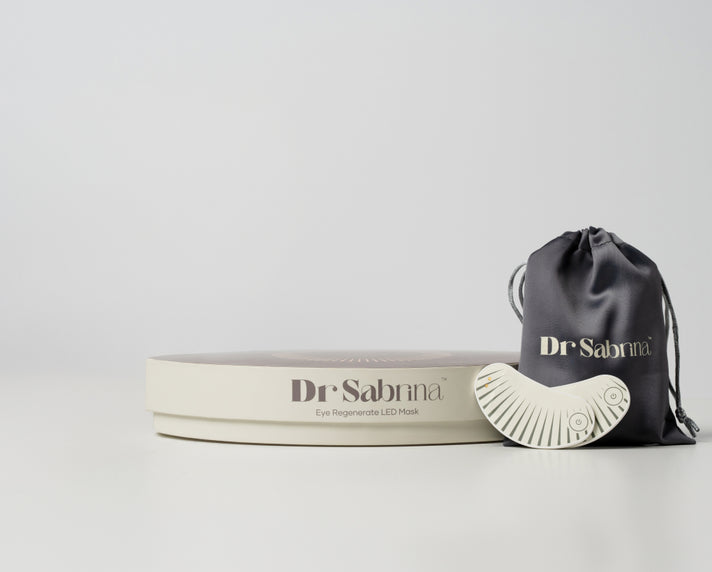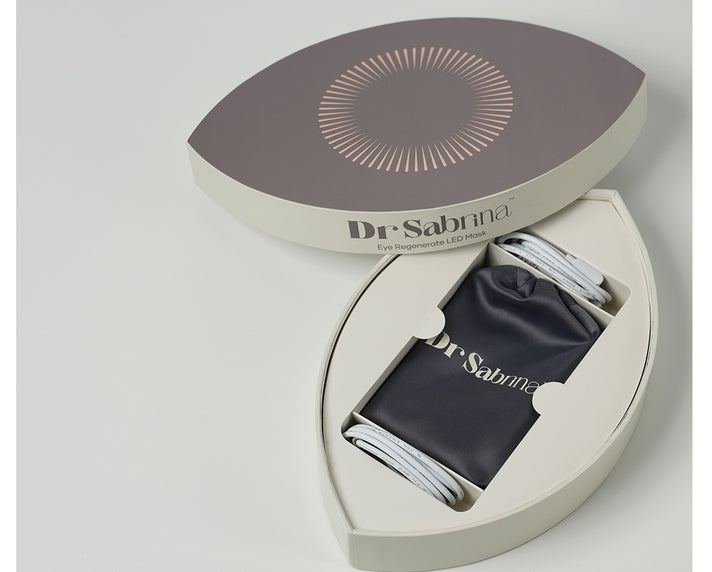
If you are beginning to notice the appearance of fine lines, crow’s feet, or dark circles growing under your eyes, you are not alone. The skin around our eyes is very delicate and is one of the first areas to show signs of ageing. This is likely why many people start using tretinoin around their eyes, the gold standard in skincare for wrinkles, fine lines, and hyperpigmentation. However, using tretinoin around the eyes is not as simple as slapping on your usual moisturiser.
The under-eye area is extremely sensitive, and improper usage could lead to irritation or dryness. In this article, we will cover basic questions like: can you put tretinoin under your eyes, can I use tretinoin under my eyes, and what does tretinoin under the eyes look like before and after?
What Is Tretinoin?
Tretinoin, a form of Vitamin A from the retinoid family, is often prescribed for acne, photoageing (sun-damaged skin), and signs of ageing (e.g., fine lines). It works by speeding up cell turnover, unclogging pores, and increasing collagen production.
When used properly, tretinoin around the eyes can reduce fine lines, lighten dark under-eye circles, and improve general skin texture.
Can You Apply Tretinoin Under Your Eyes?
One of the most frequently asked questions in skincare forums and dermatology clinics is, ‘Can you put tretinoin under eyes?’ The short answer: yes, but with caution.
The skin around the eyes is thinner and more sensitive than elsewhere on the face. Using tretinoin around the eyes has the potential to dry out, peel, or irritate the skin in this area if not applied correctly. To prevent these problems, dermatologists suggest applying only a pea-sized quantity to the entire face, keeping a small dot for the area around the eyes.
Tretinoin Under Eyes Before and After
If you're thinking about incorporating tretinoin under your eyes into your regimen, you're likely wondering about the outcomes. A quick Google search of ‘tretinoin under eyes before and after’ photos indicates evident improvements in crow's feet, fine lines, and pigmentation in 8-12 weeks.
Several users mention:
- Smoother texture
- Reduced puffiness
- Lighter dark circles
- Fewer visible wrinkles
But results may vary. It’s essential to use the product consistently and correctly to get those wow-worthy tretinoin under-eye before and after effects.
Can I Use Tretinoin Under My Eyes Every Day?
If you're wondering, can I apply tretinoin under the eyes every day? The reply is based on your skin's sensitivity and familiarity with retinoids. Beginners should start applying tretinoin only 1-2 times a week, increasing the frequency as their skin develops tolerance.
A valuable trick: always apply moisturiser before and after applying tretinoin around the eyes to cushion the product and minimise the possibility of tretinoin irritation around the eyes.
Also, use an under eye serum that helps calm and moisturise. A lightweight under-eye serum can do wonders when used in combination with tretinoin to help combat dryness and redness.
Benefits of Applying Tretinoin Around the Eyes
When applied correctly, tretinoin around the eyes provides remarkable benefits. Here's what you can look forward to:
1. Minimises Wrinkles and Fine Lines
The main advantage of tretinoin for eye wrinkles is its ability to stimulate collagen production. This tightens the skin and minimises the depth of fine lines.
2. Smooths Skin Texture
Dry or crepey skin around the eyes becomes smoother with consistent use of tretinoin.
3. Lightens Dark Circles
Although not its primary intention, tretinoin helps lighten dark circles under the eyes by stimulating cell turnover.
4. Prevents Premature Ageing
Applying tretinoin around the eyes as a preventive treatment during your late 20s or early 30s can postpone visible signs of ageing.
Tretinoin Around the Eyes: Precautions
Though the benefits are convincing, tretinoin around the eyes should be used responsibly:
- Patch test before full application.
- Avoid combining with intense exfoliants such as AHAs/BHAs.
- Apply sunscreen every day. Retinoids increase your skin's vulnerability to UV damage.
- Combine tretinoin with a hydrating under-eye serum to keep your skin moisturised.
- Common Side Effects and How to Handle Them
Tretinoin eye irritation may appear as redness, flaking, and tightness. These are normal but can be reduced with good care. Here’s how to handle it:
- Decrease usage frequency.
- Cleanse the area with a gentle cleanser.
- Use a rich eye cream or under-eye serum.
- Avoid rubbing or pulling the delicate skin around the eyes.
Remember, tretinoin for the eyes needs a slow and steady approach.
Final Thoughts
Using tretinoin around the eyes as part of your skincare regimen can be a total game-changer in terms of smoothing wrinkles and evening out the tone. But as with all strong products, use it with respect. Introduce it gradually, watch your skin's reaction, and use it alongside moisturiser, particularly a calming under-eye serum.
If you're still wondering if you can apply tretinoin under your eyes, the answer is yes—but start low, go slow, and keep it hydrated. With persistence and patience, your tretinoin under-eye before and after pictures will be well worth waiting for.
And don't forget— How often should you use retinol is just as important as what product you use. Stick to a regular routine, and you’ll be on your way to smoother, brighter skin under your eyes.
FAQs
1. Can you apply tretinoin under eyes?
Yes, but use it carefully. The skin under the eyes is sensitive, so use a small amount and always follow up with a moisturiser or under-eye serum.
2. How frequently should you apply tretinoin around the eyes?
Start with 1-2 times a week, and then gradually increase as needed, depending on your skin tolerance. Curious about how often you should apply retinol? Frequency must always be modified based on your skin's reaction.
3. What are the side effects of tretinoin around the eyes?
Common side effects are dryness, peeling, and redness, collectively referred to as tretinoin irritation around eyes. These tend to improve with regular moisturising and reduced application frequency.
4. Can I use tretinoin for wrinkles around eyes?
Yes. Tretinoin for wrinkles around the eyes is very effective because it stimulates collagen production and helps renew the skin.
5. What do I combine with tretinoin under the eyes?
Apply a hydrating under-eye serum and a barrier-repairing moisturiser. These help calm the skin and reduce the risk of irritation.












